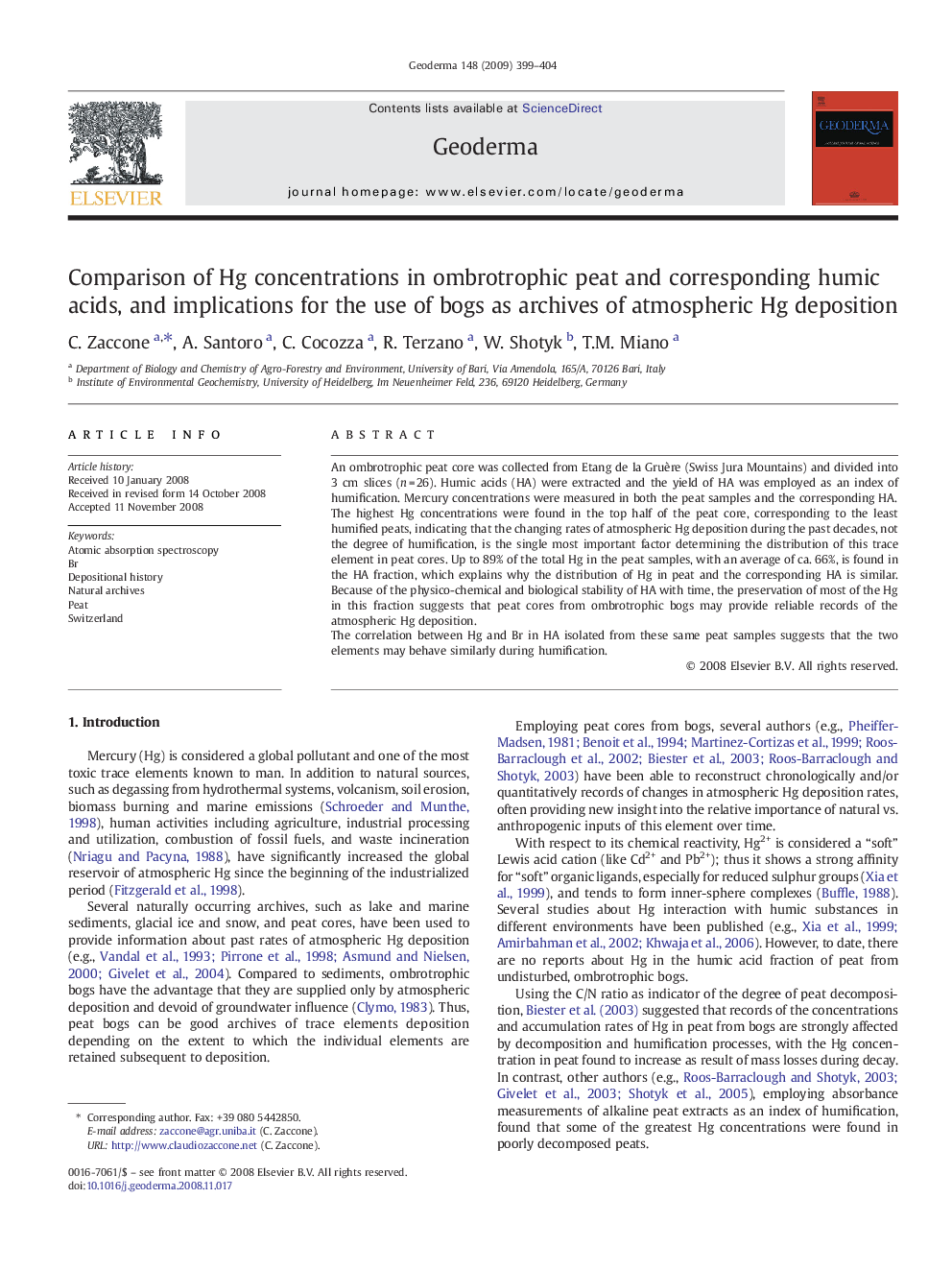| Article ID | Journal | Published Year | Pages | File Type |
|---|---|---|---|---|
| 4574642 | Geoderma | 2009 | 6 Pages |
An ombrotrophic peat core was collected from Etang de la Gruère (Swiss Jura Mountains) and divided into 3 cm slices (n = 26). Humic acids (HA) were extracted and the yield of HA was employed as an index of humification. Mercury concentrations were measured in both the peat samples and the corresponding HA.The highest Hg concentrations were found in the top half of the peat core, corresponding to the least humified peats, indicating that the changing rates of atmospheric Hg deposition during the past decades, not the degree of humification, is the single most important factor determining the distribution of this trace element in peat cores. Up to 89% of the total Hg in the peat samples, with an average of ca. 66%, is found in the HA fraction, which explains why the distribution of Hg in peat and the corresponding HA is similar. Because of the physico-chemical and biological stability of HA with time, the preservation of most of the Hg in this fraction suggests that peat cores from ombrotrophic bogs may provide reliable records of the atmospheric Hg deposition.The correlation between Hg and Br in HA isolated from these same peat samples suggests that the two elements may behave similarly during humification.
